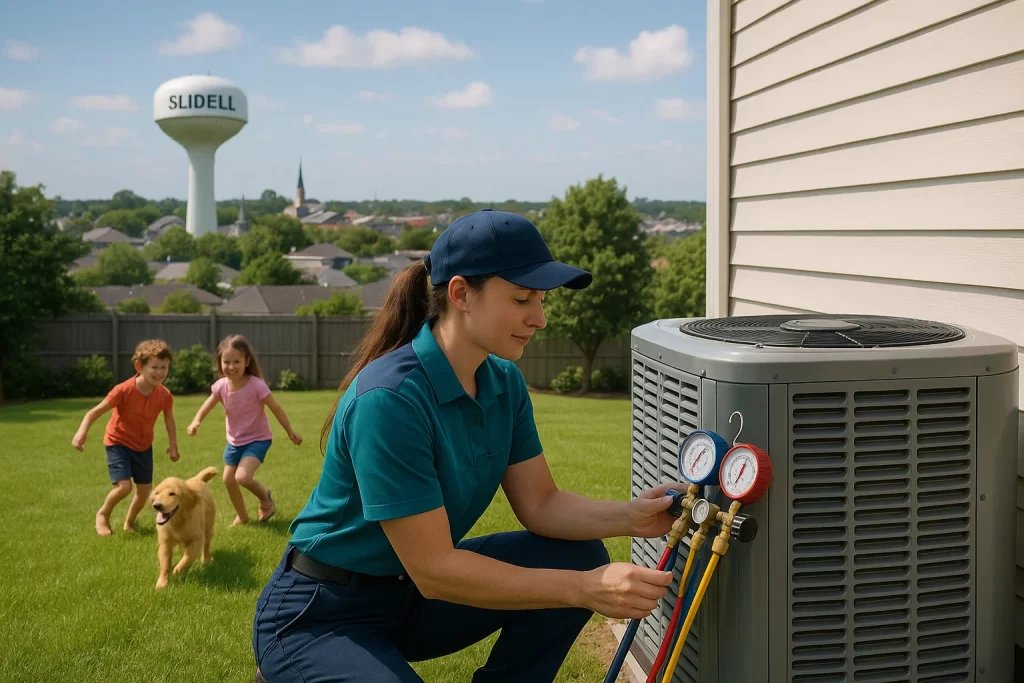If you’re a homeowner considering a new air conditioning or heat pump system in 2025, you’ve likely heard about the transition to A2L refrigerants. With new refrigerant regulations in effect and discussions from the US Environmental Protection Agency (EPA) making headlines, it’s natural to wonder how this shift could affect your home comfort and your wallet. Here’s what you need to know.

What Are A2L Refrigerants?
A2L refrigerants are a new class of low-global-warming-potential (GWP) refrigerants designed to replace older, high-GWP options like R-410A. These refrigerants are mildly flammable but have been proven safe for residential and commercial use when installed and serviced by qualified professionals.
The switch to A2L refrigerants is part of a broader industry-wide move driven by the American Innovation and Manufacturing (AIM) Act, which supports the phasedown of hydrofluorocarbons (HFCs) to reduce climate impact.
Why Is the A2L Transition Happening Now?
As of January 1, 2025, manufacturers are no longer allowed to produce new air conditioning and heat pump systems using refrigerants with a GWP over 700 for most residential and light commercial applications.
This regulatory milestone is pushing the HVAC industry toward newer refrigerants like R-32 and R-454B, both of which meet the low-GWP requirements. The move isn’t just about compliance—it’s about creating more energy-efficient systems that are better for the environment while maintaining performance.
What About the EPA’s Announcement in March 2025?
On March 12, 2025, EPA Administrator Lee Zeldin announced that the agency would “undertake 31 historic actions” in what was called the largest single day of deregulation in US history. This led to understandable concern across many industries, including HVAC, especially after ACHR The News published an article on March 13 titled “Updated: EPA Reconsiders Refrigerant Rule.”
But here’s the good news for homeowners: these EPA actions do not affect the ongoing A2L refrigerant transition for residential HVAC systems.
Leading manufacturers like Daikin have confirmed that their refrigerant strategies remain unchanged. After reviewing the EPA’s statements and discussing the potential impacts with industry experts, Daikin and other trade professionals agree:
- The 2025 implementation of GWP restrictions remains in place
- The AIM Act and refrigerant phase-down schedule remain active
- The EPA’s focus in this round of deregulation appears to be on food and semiconductor technologies—not HVAC systems
So, while the headlines may have sounded dramatic, there is no reversal of the refrigerant transition affecting homeowners like you in 2025.
What Does This Mean for Your Home?
If you’re planning to replace or upgrade your HVAC system this year, you’ll likely be offered systems that use A2L refrigerants. Here’s what that means for you:
- Improved efficiency: A2L refrigerants support newer systems that are designed to be more energy-efficient, helping lower your monthly utility bills
- Environmental benefits: With a lower global warming potential, these systems reduce your household’s carbon footprint
- Safety: Though A2Ls are classified as mildly flammable, they’re safe when installed and maintained by licensed professionals following updated building codes and safety standards.
- Compliance: Choosing an A2L-compatible system ensures you’re aligned with the latest federal guidelines and building codes.
What Should You Do Next?
The transition to A2L refrigerants is a long-planned and carefully implemented industry shift—and it’s here to stay. For homeowners, the key is to work with our team of licensed HVAC professionals who understand the new standards and can guide you through equipment selection, installation, and maintenance.
Natal’s Air Conditioning, Plumbing & Electrical. Service Honoring the Golden Rule in North Shore and South Shore communities.
